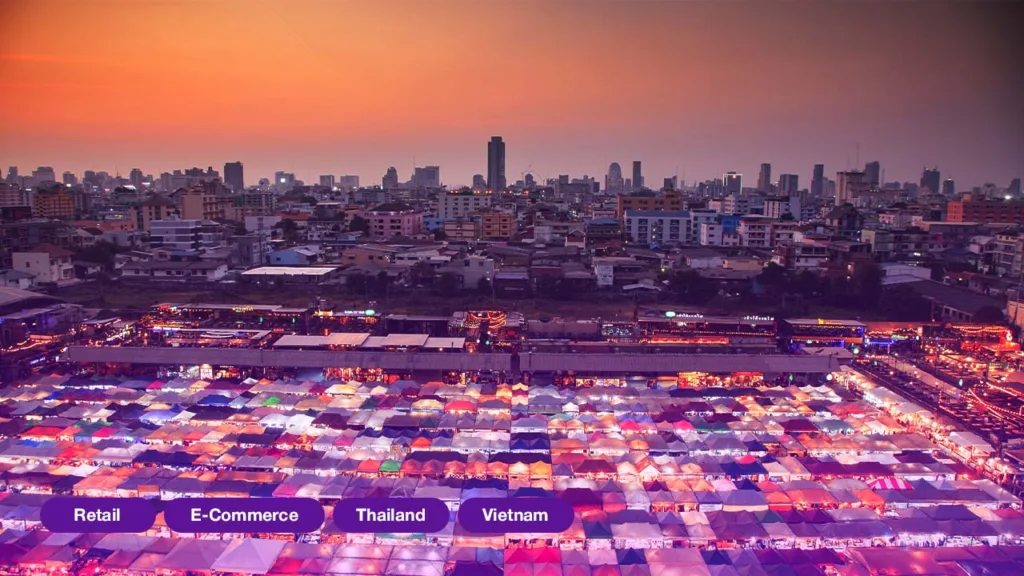The e-commerce landscape in Southeast Asia is experiencing a remarkable transformation, with Thailand and Vietnam emerging as the frontrunners in this digital revolution. According to the latest “Ecommerce in Southeast Asia 2024” report by Momentum Works, the region’s top eight e-commerce platforms saw their gross merchandise value (GMV) soar to an impressive US$114.6 billion in 2023, marking a 15% year-over-year increase.
This surge is particularly noteworthy in Vietnam and Thailand, where growth rates reached a staggering 52.9% and 34.1% respectively. Vietnam’s meteoric rise has propelled it to become the third-largest e-commerce market in Southeast Asia, surpassing the Philippines with a GMV of US$13.8 billion. Meanwhile, Thailand solidified its position as the second-largest market, with its GMV expanding from US$14.4 billion in 2022 to US$19.3 billion in 2023.
While Indonesia maintains its crown as the region’s e-commerce giant with a GMV of US$53.8 billion, its growth has decelerated to 3.7%, indicating a shift in the regional dynamics. This slowdown in Indonesia has opened doors for other markets to gain ground, reshaping the competitive landscape of Southeast Asian e-commerce.
A key driver of this e-commerce boom is the rise of live commerce, a trend that has taken the region by storm. Brands in Vietnam and Thailand are leveraging livestreaming features on platforms like TikTok to achieve unprecedented growth. For instance, Vietnamese fashion brand Guno reported a twentyfold increase in monthly revenues after a year of livestreaming on TikTok.
The success of live commerce is not limited to Vietnam. In Thailand, it accounted for 10% of alternative e-commerce in 2022, the highest share across Southeast Asia. This innovative approach to online shopping is redefining consumer behavior and creating new opportunities for brands and influencers alike.
TikTok Shop, the e-commerce arm of the popular video-sharing app, has emerged as a game-changer in the region. In 2023, TikTok Shop’s GMV quadrupled, catapulting it to become the second-largest e-commerce platform in Southeast Asia. This rapid ascent underscores the growing influence of social media-integrated shopping experiences.
As the e-commerce sector in Southeast Asia continues to evolve, it’s clear that innovation and adaptability are key to success. The region’s unique blend of technological adoption, youthful demographics, and increasing digital connectivity provides fertile ground for further growth and disruption in the e-commerce space.
With Thailand and Vietnam leading the charge, and new players like TikTok Shop reshaping the competitive landscape, the future of e-commerce in Southeast Asia looks bright and dynamic. As traditional retail boundaries blur and new shopping experiences emerge, businesses and consumers alike are poised to benefit from this digital retail revolution.
















